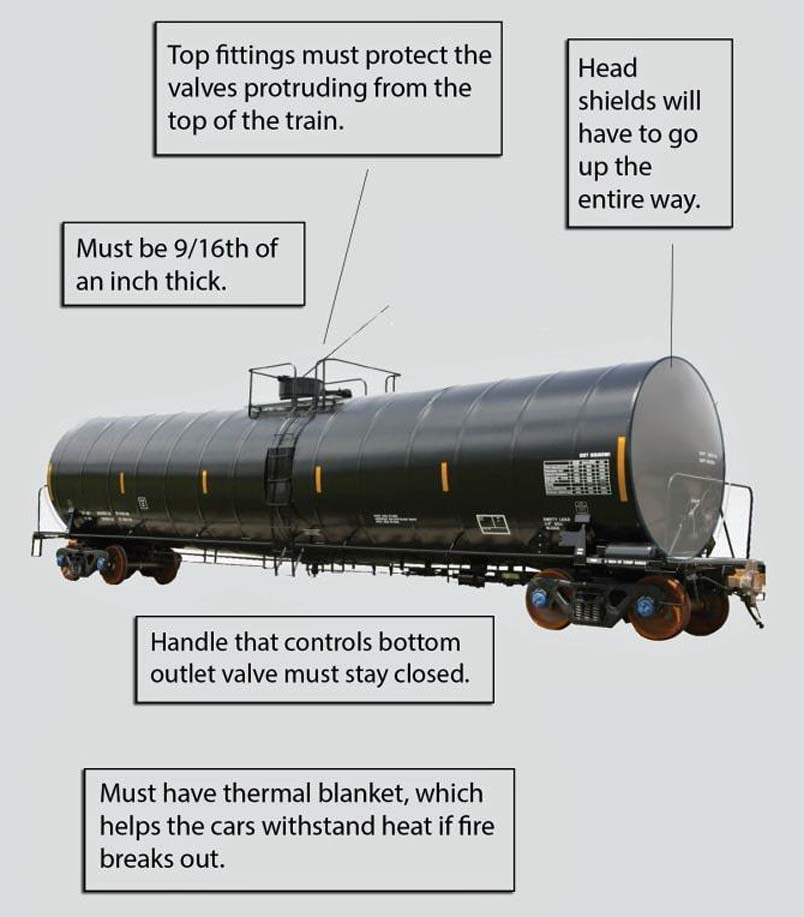
Guernsey Saskatchewan - The oil carrying Canadian Pacific Railway (CP) train that derailed and lit up an area of rural Saskatchewan
earlier this week was pulling modified tank cars meant to reduce the risk of puncturing and other damage during a crash.
The train derailed west of Guernsey just south of Highway 16 shortly after midnight on Monday.
Thirty four cars came off the tracks, according to CP.
No one was injured.
CP does not own any of the rail cars involved in the incident, according to CP spokesperson Andy Cummings.
Cummings confirmed the train's cars were a mix of retrofitted TC-117 cars and jacketed CPC-1232 cars, both of which "meet all Transport Canada
standards."
Both tank types are also considered improvements over the DOT-111A steel cars involved in the July 2013 Lake Megantic train derailment that killed 47
people.
The Transportation Safety Board of Canada (TSB) had called for the removal of the thinner hulled DOT-111A tanker cars for more than 20 years, underlining their
vulnerability in case of a crash.
After the Lake Megantic crash, the federal government unveiled the rail cars it hoped would become the new standard for transporting flammable
liquids.
Dubbed the TC-117 in Canada (DOT-117 in the U.S.), these cars have better thermal protection and are supposed to withstand puncture and other damage better
than their predecessors, according to Transport Canada.
"Thermal protection increases the survivability of tank cars in the event of a fire," reads a TC-117 info sheet on the Transport Canada
website.
"The thermal protection required for the TC-117 must be able to withstand exposure to a 100 minute pool fire and a 30 minute jet fuel fire without
rupturing."
The jacketed CPC-1232 cars that were also on the CP train are made of tougher material than the rail cars that exploded in Lake Megantic.
According to the U.S. Bureau of Transportation Statistics, CPC-1232 cars are meant "to be safer than DOT-111 tank cars for carrying petroleum crude oil
and ethanol."
Given that a mix of CPC-1232 and TC-117 rail cars were in Monday's car pile, "the TSB would probably examine if there were any differences in crash
performance between the two types," said Ian Naish, a rail safety consultant and former Transportation Safety Board of Canada investigator.
Author unknown.
provisions in Section 29 of the Canadian
Copyright Modernization Act.


